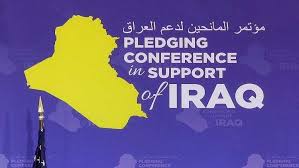Attacks on US assets increase amid Iraq’s political power vacuum as protests continue across the country
On 12 December, gruesome images of a crowd of people taking photos of a body strung up from a traffic light in Wathba Square in central Baghdad flooded social media. At the time, it was unclear who the teenage boy was. Some said the teenager had been shooting anti-government protesters before he was set upon and killed by a group of demonstrators.
Security officials have said the teenager was wanted by police on drug-related charges and was running from security forces at the time. The ugly incident is the latest in a string of bloody and violent episodes connected to the ongoing protest movement.
More than 400 people have died and more than 15,000 people have been injured since protests started on 1 October over government corruption and poor provision of public services.
Protests have broken out in cities across Iraq’s south as well as in the capital.
A total of 23 people were killed on 6 December, as gunshots were fired in Baghdad’s Khilani square as Iraq’s authorities and militias tried to crack down on the country’s leaderless popular uprising.
On 28 November, at least 33 protesters were killed in Nasiriya city after security forces used live ammunition and tear gas canisters on crowds.
Protests continue
The same day, another 11 people were killed in the Shia holy city of Najaf, where an Iranian consulate was previously torched by angry protesters.
Despite repeated violent crackdowns on the protest movement, and the high number of deaths and injuries among the protesters, demonstrators have continued to take to the streets protesting against government corruption and foreign interference in domestic politics.
“The question is: how long can this carry on?” says Eimear Hennessy, a risk analyst at G4S Consulting.
“There is only so long that people can keep coming out onto the streets and getting hurt or killed before the protesters decide they have to find another way.
“There may come a point where the protest movement becomes fatigued because of its heavy losses.
“There is also another scenario, which is more unlikely, where protesters get hold of weapons and start a more violent phase of their campaign.”
Provincial elections, which were planned for April next year, have been cancelled due to the unrest and plans for an early general election are being discussed.
“An election is unlikely to solve Iraq’s civil unrest problem,” says Hennessy.
As things stand, the protesters are saying they will not stop until the ruling establishment is removed, but they have failed to come up with an alternative to the existing government.
If the protesters do get weapons and start a more violent campaign against the government, it is likely to be crushed relatively quickly by the government, according to analysts.
“The majority of the protesters are very young,” says Hennessy. “Even if they did get weapons, it is likely they would be defeated quickly.
“The protests are too concentrated to turn into some sort of all-out civil war. The protests are just located in particular locations in Baghdad and the rest of the city is functioning relatively normally.”
In the south of Iraq, negotiations between the government and regional tribes is likely to be key to stability.
The major tribes have access to large weapons stashes and could potentially escalate violence if the government does not take their grievances seriously.
“Escalating conflict orchestrated by the Shia tribes in the south cannot be ruled out, but I think it is unlikely to reach this point in the immediate term,” says Hennessy.
“The government has recognised that it needs to negotiate with the tribes and accommodate their demands.”
Escalating attacks
Since protests broke out on 1 October, there has been a clear escalation in attacks on US interests in the country.
With the authorities preoccupied by the protests, some militias, such as Iranian-aligned Popular Mobilisation Units (PMUs), have taken advantage of the chaos to increase their activities.
There were nine rocket attacks reported in Baghdad between 1 October and 11 December, compared to just three recorded between 1 January and 1 October, according to data from the travel risk management and information service Intelyse.
“The increased frequency of rocket attacks highlights a growing security vacuum that is allowing Iran-backed PMUs to operate with seeming impunity,” says Hennessy.
“In the past, when the PMUs have attacked US interests like this, there has been the ability to put pressure on them and deescalate the situation.
“This time, there is no government pressure to rein them back in.”
It remains to be seen what will occur in the wake of the incident in Wathba Square on 12 December.
The killing of the teenager has been condemned by protesters in a statement, which said that the perpetrators were not part of their peaceful demonstrations.
The incident could well be used by the security forces as a licence for further violent crackdowns on protests and demonstrations.
Source: MEED, 29 DECEMBER 2019
https://www.meed.com/iraq-economy/








Comment here